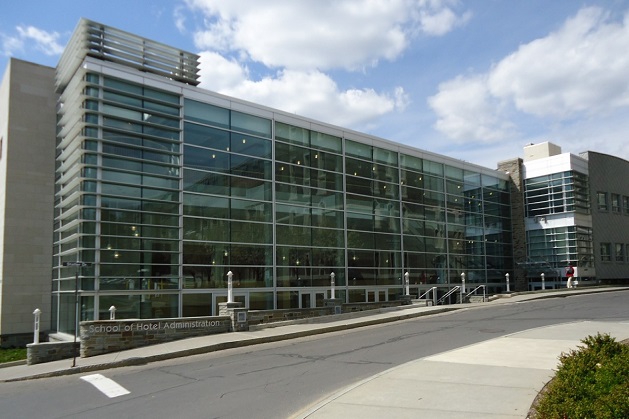
Cornell report shows hotel brand conversions can boost performance
[vc_row full_width=”” parallax=”” parallax_image=”” bg_type=”” parallax_style=”” bg_image_new=”” layer_image=”” bg_image_repeat=”” bg_image_size=”” bg_cstm_size=”” bg_img_attach=”” parallax_sense=”” bg_image_posiiton=”” animation_direction=”” animation_repeat=”” video_url=”” video_url_2=”” u_video_url=”” video_opts=”” video_poster=”” u_start_time=”” u_stop_time=”” viewport_vdo=”” enable_controls=”” bg_override=”” disable_on_mobile_img_parallax=”” parallax_content=”” parallax_content_sense=”” fadeout_row=”” fadeout_start_effect=”” enable_overlay=”” overlay_color=”” overlay_pattern=”” overlay_pattern_opacity=”” overlay_pattern_size=”” overlay_pattern_attachment=”” multi_color_overlay=”” multi_color_overlay_opacity=”” seperator_enable=”” seperator_type=”” seperator_position=”” seperator_shape_size=”” seperator_svg_height=”” seperator_shape_background=”” seperator_shape_border=”” seperator_shape_border_color=”” seperator_shape_border_width=”” icon_type=”” icon=”” icon_size=”” icon_color=”” icon_style=”” icon_color_bg=”” icon_border_style=”” icon_color_border=”” icon_border_size=”” icon_border_radius=”” icon_border_spacing=”” icon_img=”” img_width=”” ult_hide_row=”” ult_hide_row_large_screen=”” ult_hide_row_desktop=”” ult_hide_row_tablet=”” ult_hide_row_tablet_small=”” ult_hide_row_mobile=”” ult_hide_row_mobile_large=””][vc_column width=”1/1″][vc_column_text] Hotels that convert from one brand to another generally see improved occupancy, revenue, and profit—provided they choose a strong brand that fits their property, Cornell University has revealed in its latest study. An analysis of hundreds of brand conversions over nearly two decades, published by the Center for Hospitality Research (CHR), found that hotels that changed brands, including those that changed from independent to brand, improved their top and bottom lines. However, this was not true of all brand conversions. The report, “Hotel Brand Conversions: What Works and What Doesn’t,” by Chekitan S. Dev, an associate professor at the Cornell School of Hotel Administration, is available free of charge from CHR.
Hotels that convert from one brand to another generally see improved occupancy, revenue, and profit—provided they choose a strong brand that fits their property, Cornell University has revealed in its latest study. An analysis of hundreds of brand conversions over nearly two decades, published by the Center for Hospitality Research (CHR), found that hotels that changed brands, including those that changed from independent to brand, improved their top and bottom lines. However, this was not true of all brand conversions. The report, “Hotel Brand Conversions: What Works and What Doesn’t,” by Chekitan S. Dev, an associate professor at the Cornell School of Hotel Administration, is available free of charge from CHR.
“An astonishing number of hotels convert from one brand to another, and the results are frequently quite favourable—but not always,” Dev pointed out. He and his colleagues, Yi-Lin Tsai (University of Delaware) and Pradeep Chintagunta (University of Chicago), analysed 22,407 annual financial statements for 3,010 hotels spanning 18 years (1994-2012), obtained from PKF Hospitality Research.
“My colleagues and I compared a set of 260 hotels that converted brands to a second set of 2,750 hotels that were carefully matched to each of the converted hotels in every way except that they did not convert brands,” Dev said. “We then analyzed the performance differences between the two sets. To begin with, we found that two factors seem to drive the financial results for converted hotels—the relative strength of the brand to which the hotels converted, and the fit between the brand and the property.”
“In addition to the overall conversion effect, we found that performance changes depended on whether the hotels moved upscale or downscale with their new brand,” Dev said. “Hotels that moved downscale saw increased occupancy, which improved their revenue and profit ratios. On the other hand, hotels that moved upscale did not see notable changes in revenue or profit.” Other valuable findings were that some brands are clearly stronger than others, independents that converted to a brand generally improved their performance, and renovations did boost occupancy (regardless of whether the hotel converted to a new brand).
One finding was somewhat puzzling. “We found that hotels that stayed within their brand family when they switched brands did not generally see improved occupancy, but those that moved to a similar brand in a different brand family did see improvements,” Dev said.
[/vc_column_text][/vc_column][/vc_row]





